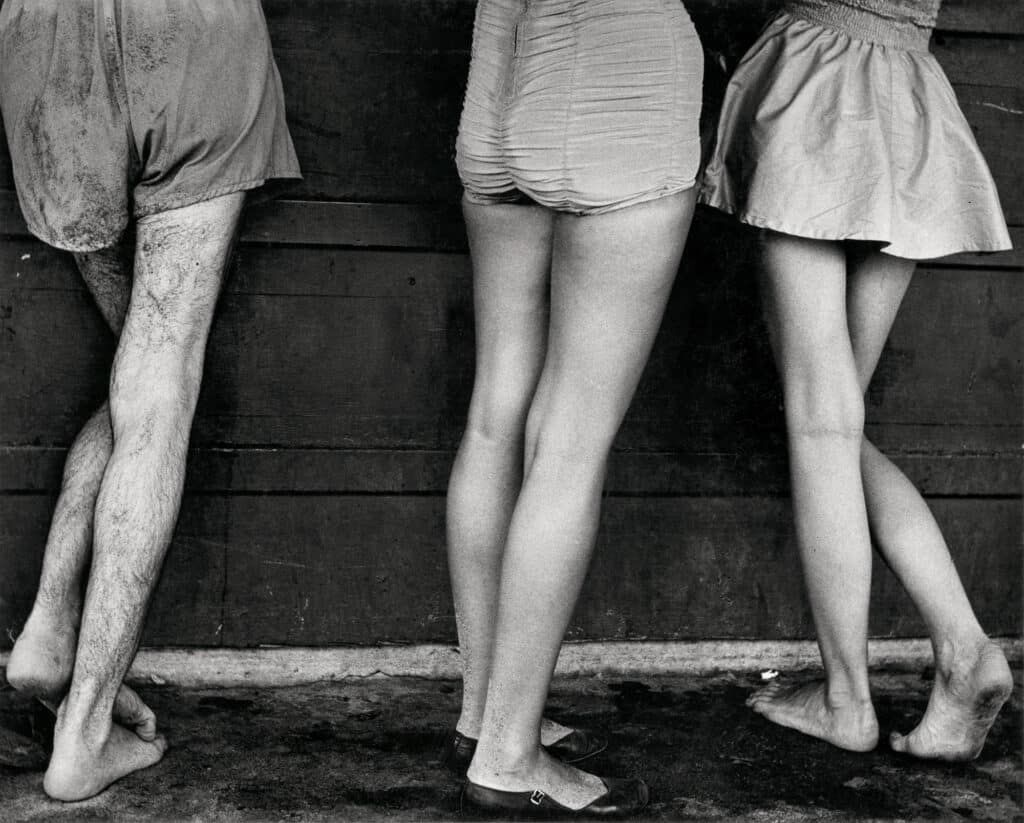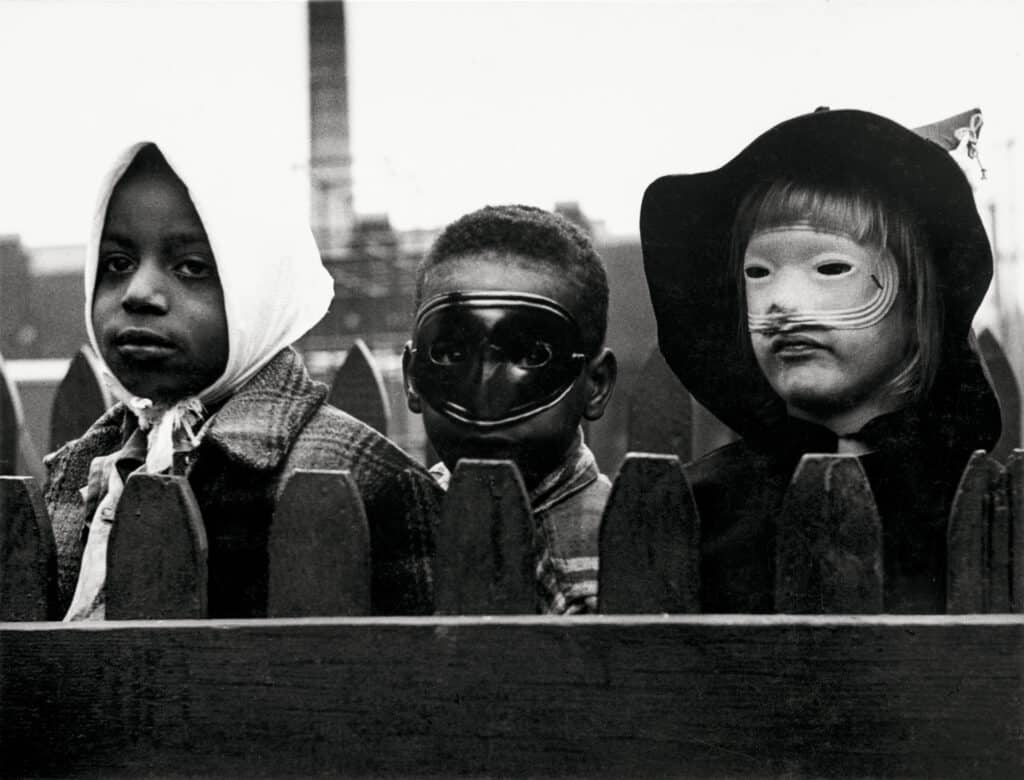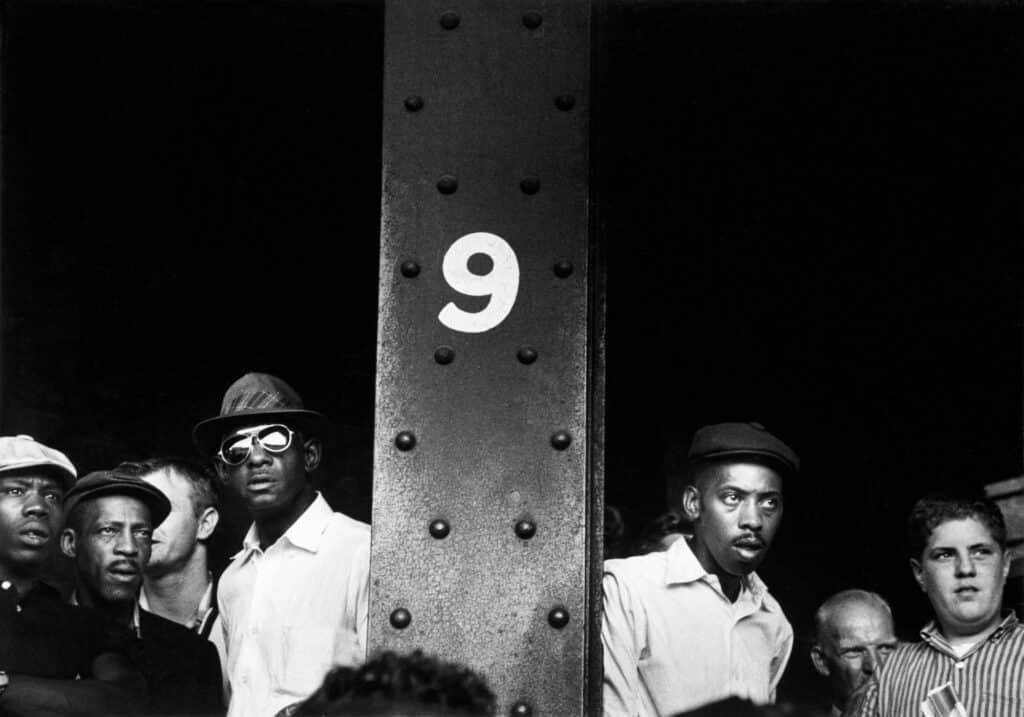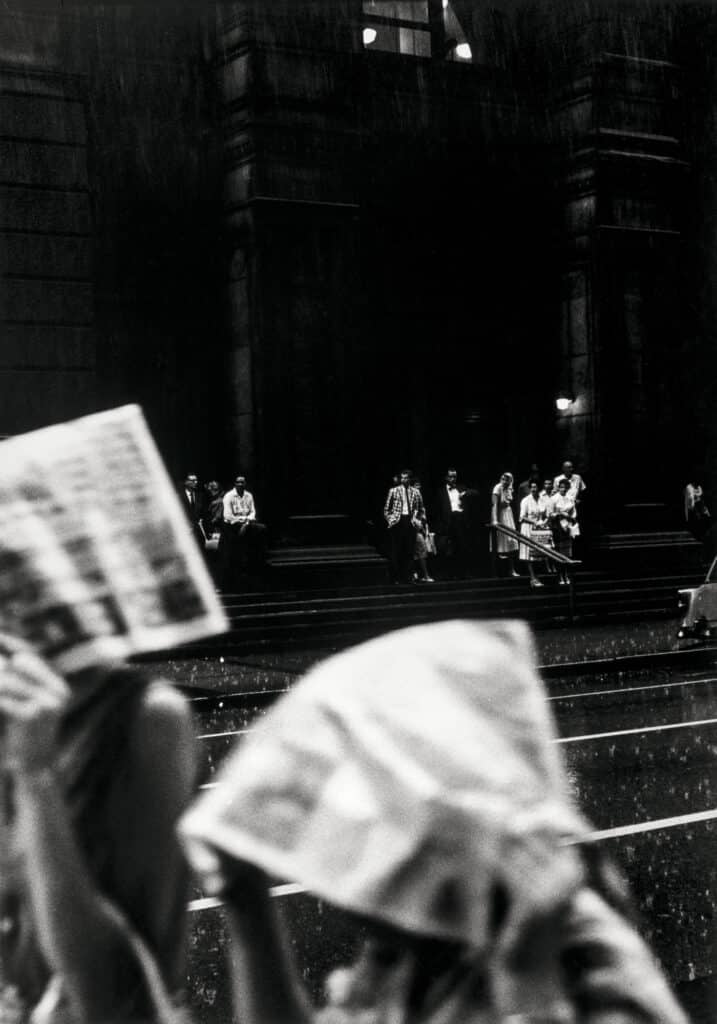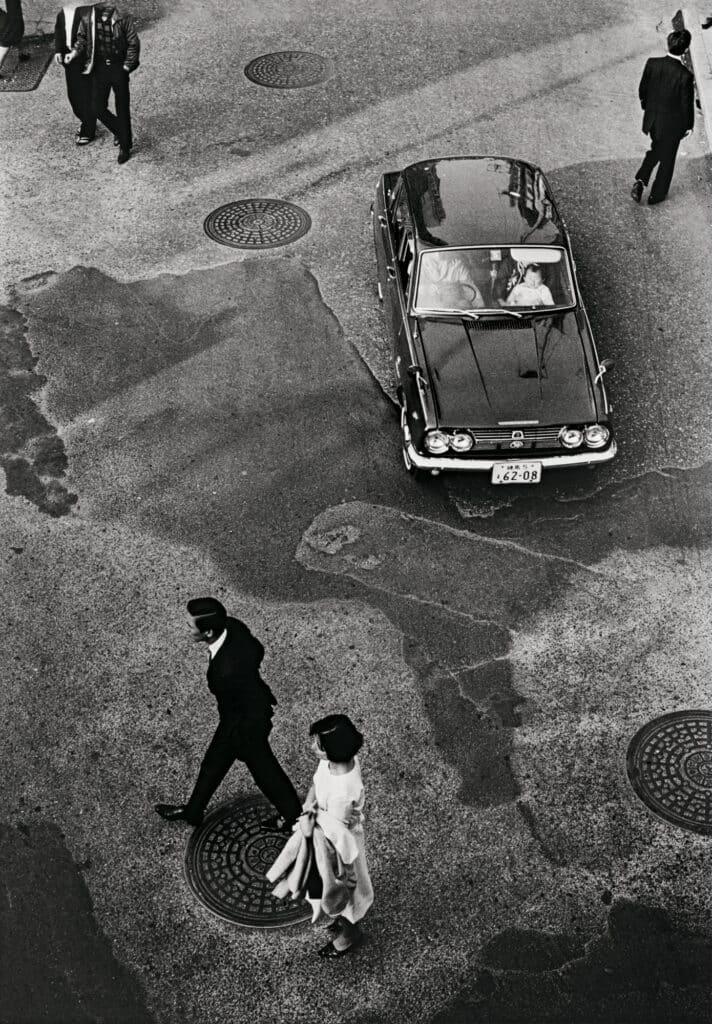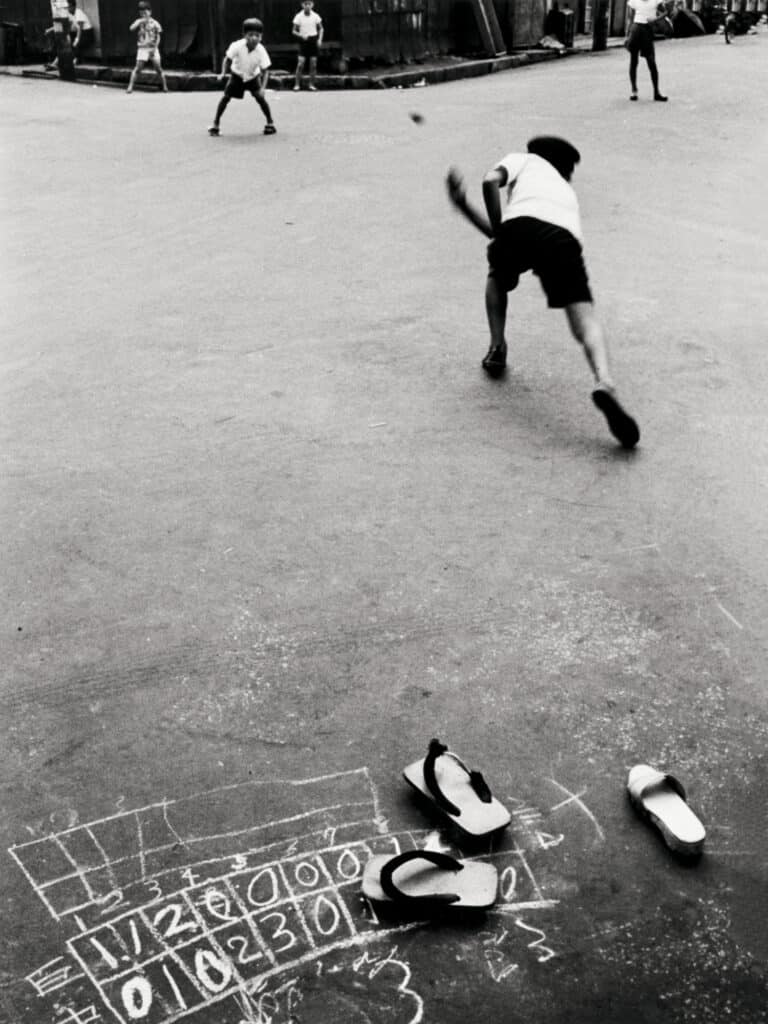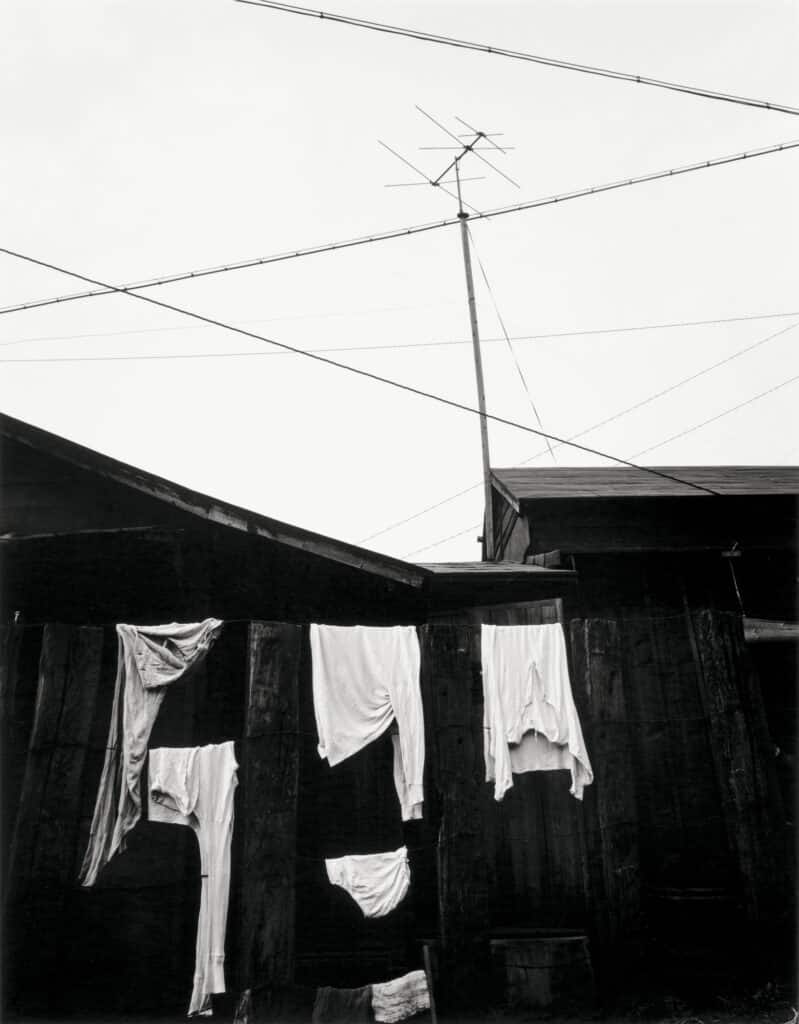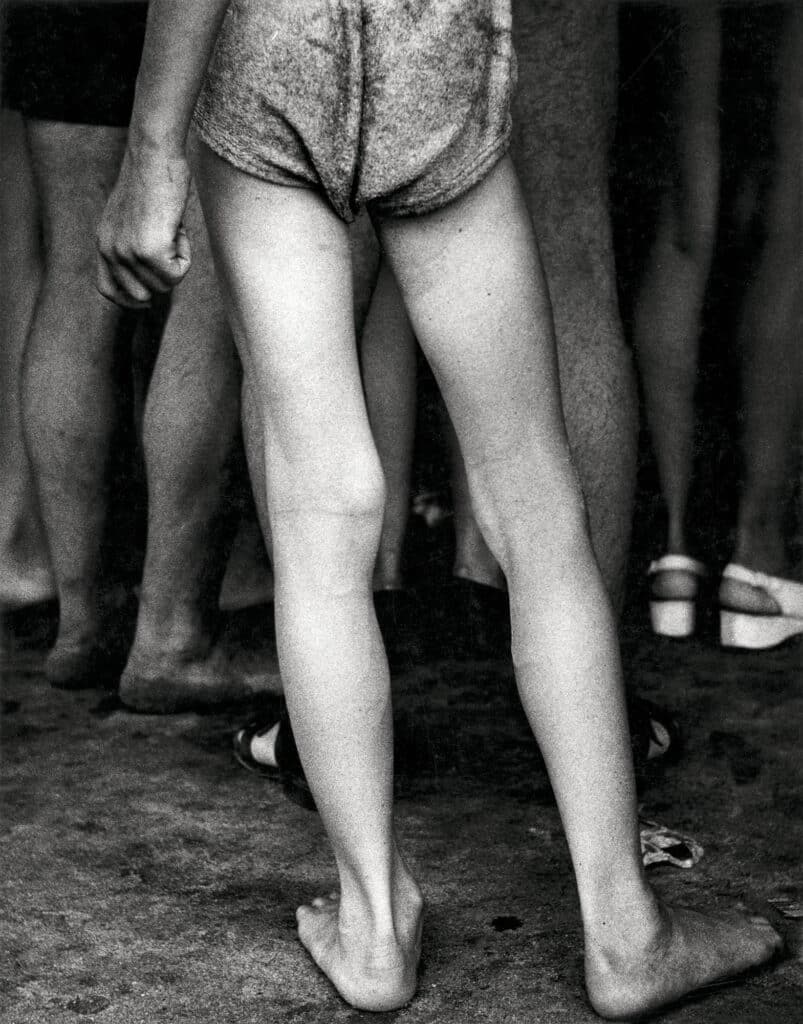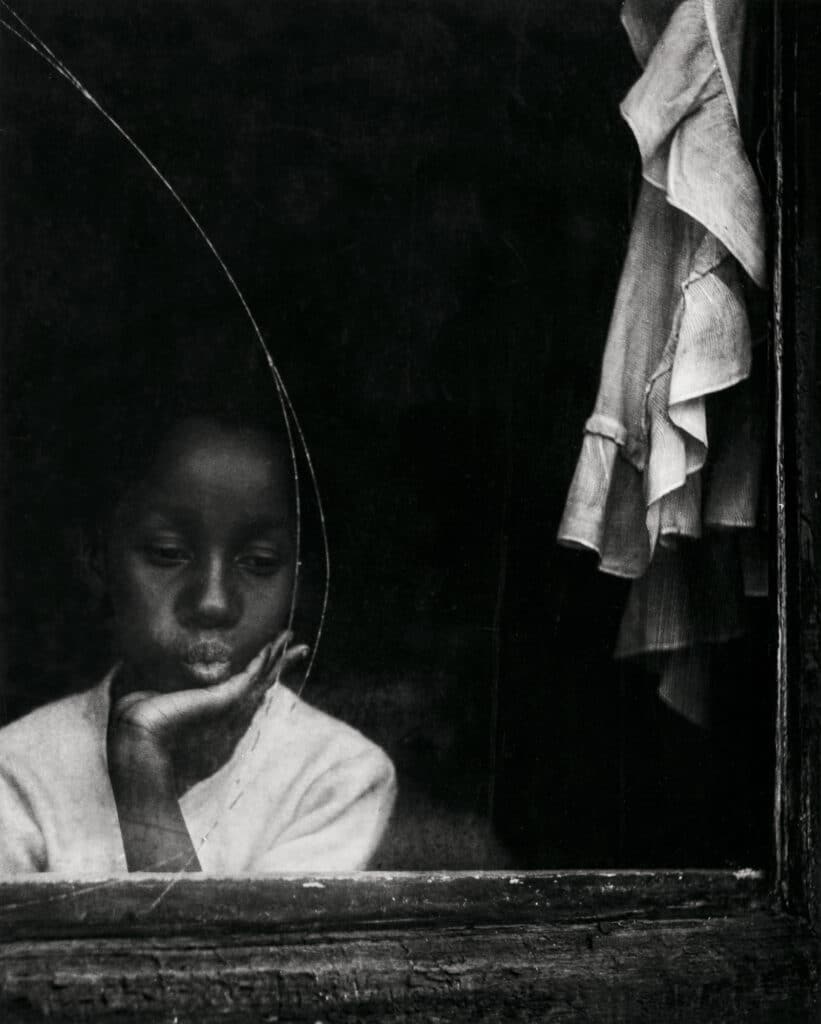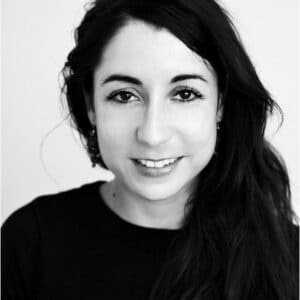Yasuhiro Ishimoto became a photographer by accident. Born in San Francisco to Japanese parents, he was initially intent on pursuing a career in agriculture. His aspirations were abruptly halted by the 1941 surprise attack on Pearl Harbor, which led American authorities to harshly detain and intern citizens of Japanese descent. Ishimoto spent two years in the Amache camp in Colorado.
Permitted a camera, he began his photographic journey behind barbed wires. Once free, he moved to Chicago, where he frequented amateur photographers’ circles before joining the Institute of Design. This institute perpetuated in the United States the teachings of the Bauhaus, the renowned German school of applied arts. There, Ishimoto mastered the strictures of geometry, volume balancing, light manipulation, texture rendering, and the nuances of black-and-white contrast.
The BAL exhibition opens with Ishimoto’s early works, marked by orderly compositions deployed in the service of representing Chicago’s modern architecture. The artist was already forging his unique path by weaving human elements into his geometric frames: like these silhouettes stretched along Lake Michigan’s shore; or another series composed entirely of the legs of beachgoers framed vertically in front of a counter.
This series of legs, with their various skin tones, colors, and shapes, marks Ishimoto’s American debut. Spotted by Edward Steichen, his work was exhibited from 1953 at MoMA in New York, before being incorporated into the museum’s collection. “I’m particularly moved by it,” comments Diane Dufour, founder and director of BAL, “because it embodies the words of John Cage: ‘Structure without life is lifeless; life without structure is invisible. True life expresses itself within and through structure.’”
Another image illustrates Cage’s point: the reserved face of a young black girl appears in a window frame, its contours following the curve of the cracked glass—of the window and of the image itself. The perfect use of the double frame exudes a quality of gentleness. Herein lies Ishimoto’s brilliance: by embedding humanity within architecture—amid raw concrete, glass, and steel lines—he evokes grace.
This image also captures the essence of the exhibition: it reveals the emergence of a gaze—that critical moment when the eye, once structured by the architectural discipline of an applied arts student, transitions into a photographic perspective, combining the geometry of the frame with the texture of the organic world. “Ishimoto’s genius,” notes Diane Dufour, “lies in crafting abstract compositions of great formal beauty amidst the random currents of life.”
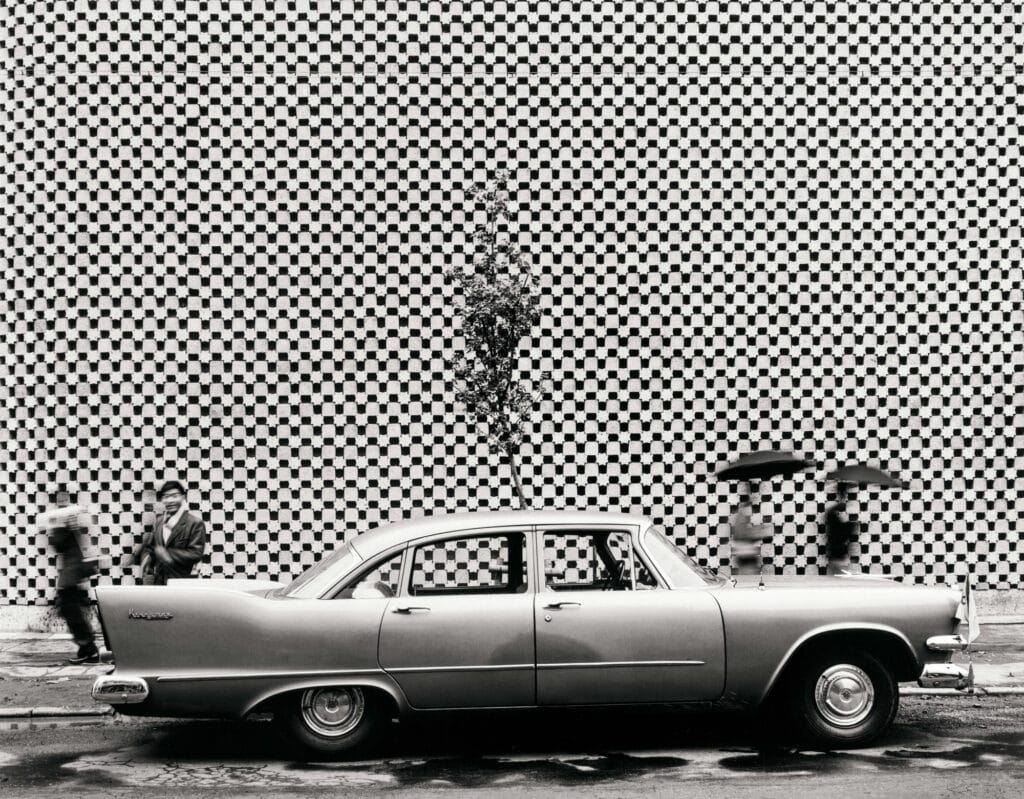
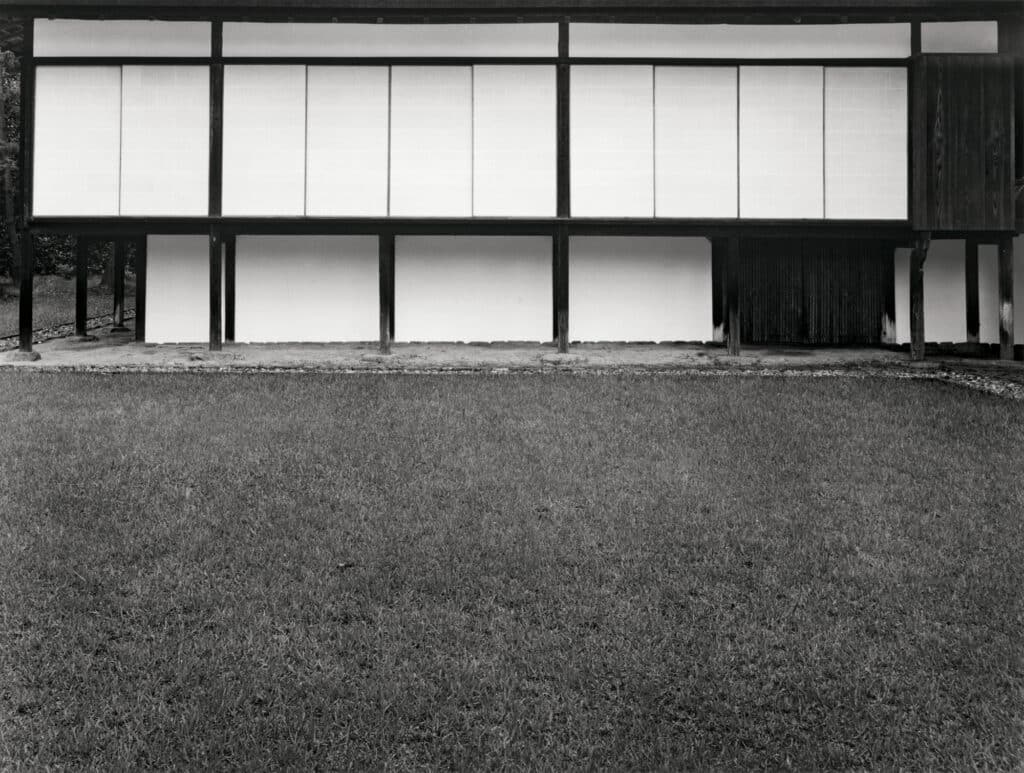
With subtlety, Ishimoto captures the fragility and transient nature of the world: street children at play in Chicago, the orchestrated movements of a Tokyo crowd, a footprint in the snow in Japan. In every subject, he positions living beings at the heart of architectural spaces. This is evident even in his later works from the imperial city of Katsura, near Kyoto, where he records the organic modernity through the geometric patterns of beams, wooden columns, and stone pathways.
These ethereal images, among the most iconic of Ishimoto’s career, demanded a fitting setting for their exhibition. The venue’s scenographer, Cyril Delhomme, crafted a labyrinth of white partitions with clean lines, evoking large rice-paper screens and stark geometries reminiscent of Mondrian’s paintings. This minimalist yet effective decor, true to the Bauhaus spirit, manages to recede while simultaneously emphasizing the power of Ishimoto’s photographs.
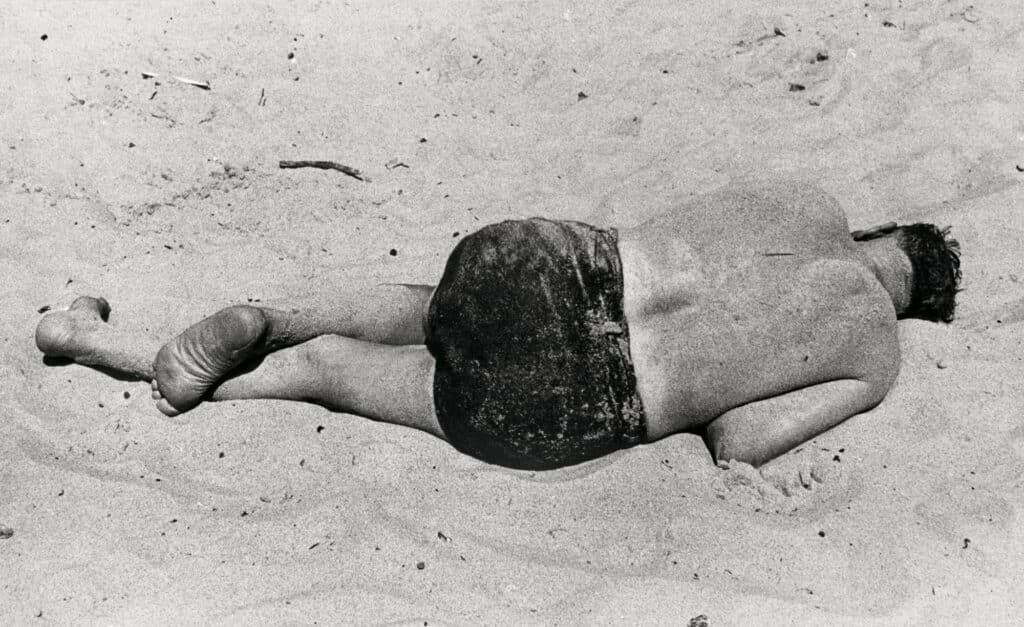
The delicate nature of the prints, mostly produced by Ishimoto himself during the 1950s and 1960s, does not detract from their impact. Displayed for the first time together outside Japan, they alone make a visit worthwhile. “Ishimoto was an exceptional printer,” remarks Diane Dufour. Following in the footsteps of his mentor at the Institute of Design, Harry Callahan, Ishimoto offers photographic works of rare elegance, “astounding in their beauty and precision.”
Yasuhiro Ishimoto: Des lignes et des corps, Le BAL, Paris, until November 17, 2024.
